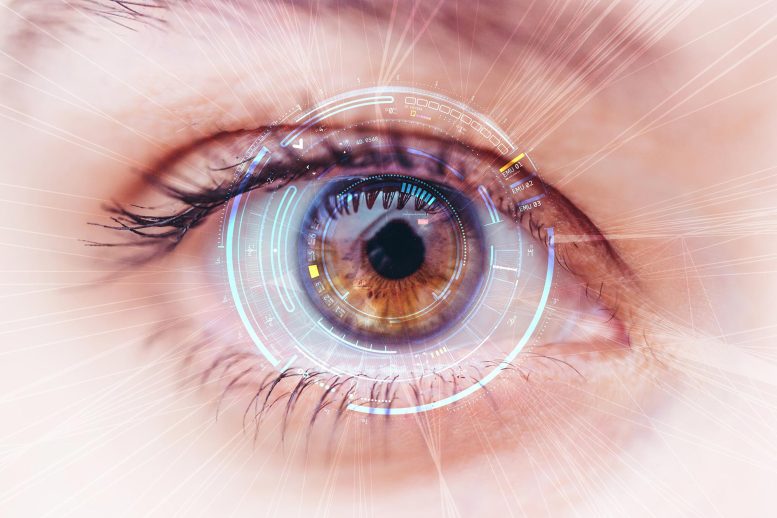
A new smart contact lens has been developed that can provide navigation information through augmented reality. The lens is attached to the human eye like a normal contact lens and uses a 3D printing process for its core technology.
Core 3D printing process technology for smart contact lenses that can implement augmented reality (AR)-based navigation has been developed by Dr. Seol Seung-Kwon’s Smart 3D Printing Research Team at the Korea Electrotechnology Research Institute (KERI) and Professor Lim-Doo Jeong’s team at Ulsan National Institute of Science and Technology (UNIST).
A smart contact lens is a product attached to the human eye like a normal lens and provides various information. Research on the lens is being conducted mainly on diagnosing and treating health. Recently, Google and others are developing smart contact lenses for displays that can implement AR. Still, many obstacles to commercialization exist due to severe technical challenges.
In implementing AR with smart contact lenses, electrochromic[1] displays that can be driven with low power are suitable, and “Pure Prussian Blue” color, with high price competitiveness and quick contrast and transition between colors, is attracting attention as the lens’ material. However, in the past, the color was coated on the substrate in the form of a film using the electric plating method[2], which limited the production of advanced displays that can express various information (letters, numbers, images).”
The achievement of KERI-UNIST lies in the fact that it is a technology that can realize AR by printing micro-patterns on a lens display using a 3D printer without applying voltage. The key is the Meniscus of used ink. The Meniscus is a phenomenon in which a curved surface is formed on the outer wall without water droplets bursting due to capillary action when water droplets are gently pressed or pulled with a certain pressure.
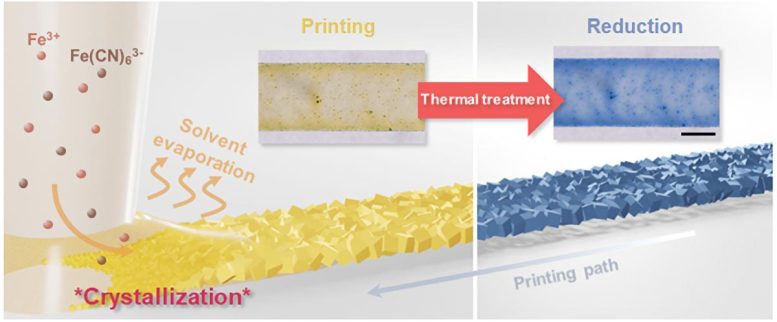
Crystallization of FeFe(CN)6 occurs on the substrate in a region confined by the meniscus, forming the uniform pattern. FeFe(CN)6 pattern is converted to the PB (Fe4[Fe(CN)6]3) via thermal reduction. Credit: Korea Electrotechnology Research Institute
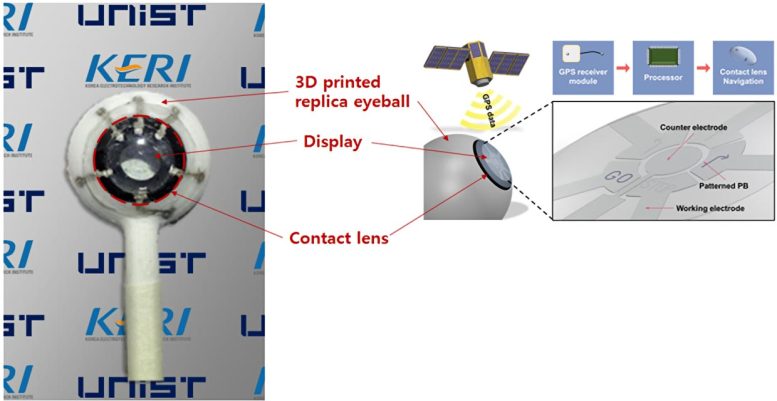
Image presents a schematic of the PB-based EC display with a navigation function in an AR smart contact lens that shows directions to the destination to a user on the EC display by receiving GPS coordinates in real time. Credit: Korea Electrotechnology Research Institute
Through the precise movement of the nozzle, the crystallization of Prussian blue is continuously performed, thereby forming micro-patterns. Patterns can be formed not only on flat surfaces but also on curved surfaces. The research team’s micro-pattern technology is very fine (7.2 micrometers) that can be applied to smart contact lens displays for AR, and the color is continuous and uniform.
The main expected application area is navigation. Simply by wearing a lens, navigation unfolds in front of a person’s eyes through AR. Games such as the popular ‘Pokemon Go’ can also be enjoyed with smart contact lenses, not smartphones.
Dr. Seol Seung-Kwon’s of KERI said, “Our achievement is a development of 3D printing technology that can print functional micro-patterns on non-planner substrate that can commercialize advanced smart contact lenses to implement AR.” He added, “It will greatly contribute to the miniaturization and versatility of AR devices.”
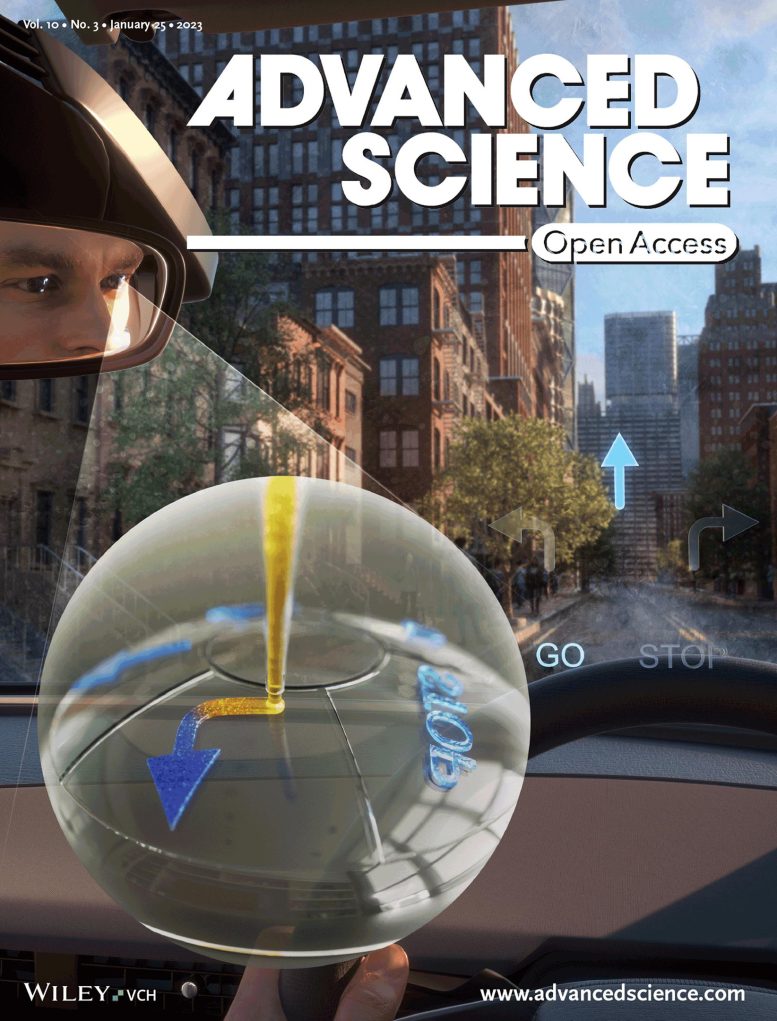
Cover image of Advanced Science Meniscus-guided micro-printing of Prussian Blue is realized by the localized crystallization of FeFe(CN)6 on the substrate confined by the ink meniscus and thermal reduction of the crystallized FeFe(CN)6. This strategy is capable of being used as an electrochromic display to give real-time directions on an augmented reality (AR) smart contact lens device. Credit: Korea Electrotechnology Research Institute
The related research results were recently published as a cover article in Advanced Science (IF 17.521/JCR 4.71%), a world-renowned academic journal in the field of materials science, in recognition of its excellence.
The research team believes that this achievement will attract a lot of attention from companies related to batteries and biosensors that require micro-patterning of Prussian blue as well as the AR field, and plans to find related demand companies and promote technology transfer.
Meanwhile, KERI is a government-funded research institute under the Ministry of Science and ICT’s National Research Council for Science and Technology. Dr. Seol Seung-Kwon is also a professor at the KERI campus of the University of Science and Technology (UST).
Notes
- Electrochromism: a phenomenon where the color of a substance changes reversibly due to an electrochemical reaction.
- Plating is the process of applying a thin layer of another metal to improve the surface condition of an object. In this process, if electrical energy is used, it is called ‘electroplating,’ and if chemical reactions are utilized without electricity, it is referred to as ‘electroless plating.’ Particularly electroplating is mainly used in the production of jewelry such as rings.
Reference: “Meniscus-Guided Micro-Printing of Prussian Blue for Smart Electrochromic Display” by Je Hyeong Kim, Seobin Park, Jinhyuck Ahn, Jaeyeon Pyo, Hayeol Kim, Namhun Kim, Im Doo Jung and Seung Kwon Seol, 28 November 2022, Advanced Science.
DOI: 10.1002/advs.202205588

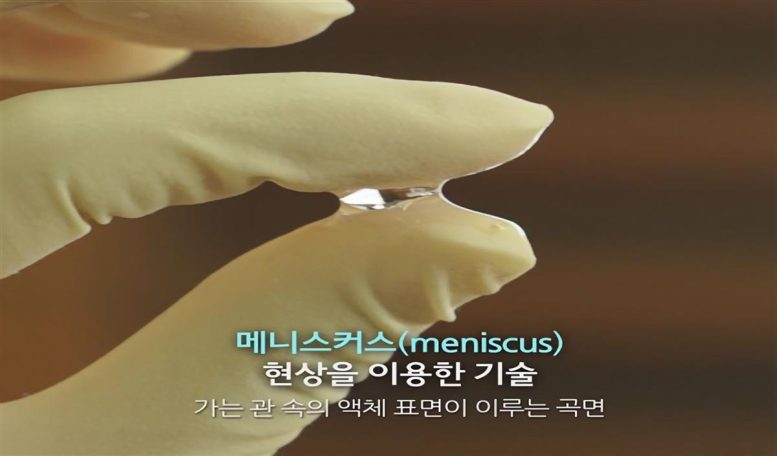
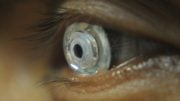
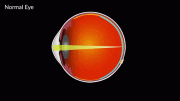




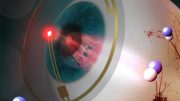
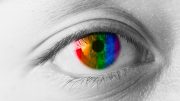
Excuse me…amd I missing something. A lifetime of optics engineering tells me this is impossible to achieve. NOTHING in the forward areas of the eye can be imaged. (Laser writing to the retina IS possible.)